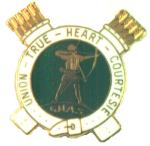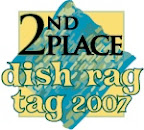I stood in a hushed, darkened gallery, the voice of a female singer chanting faintly in Middle Eastern rhythms seeping down from speakers in the ceiling. Before me were four dark, oval pieces of leather, about three inches high, suspended between plates of glass in a tilted display case. Tiny Aramaic characters were inscribed on the fragments, although they could barely be discerned against the age-darkened hide. It was as if the tips of four giant fingers had pushed against the window between our worlds.
The pieces of leather were parts of the Targum of Job, an Aramaic translation of the biblical book of Job that was one of hundreds of texts found in clay storage jars buried in caves near the Dead Sea. The Dead Sea Scrolls (or, as scholars call them, the Qumran texts) were written, collected, and stored by a Jewish sect readying itself for the Messianic age, which was imminent. The members expected two Messiahs -- a king and a priest -- and they developed an elaborate community rule that classified adherents in terms of the stages of purification they had reached. One of their major activities, it seems, was gathering and copying sacred texts. Some were parts of what became the Hebrew Bible; some were later relegated to apocryphal or secondary status; some were specific to the Qumran group; and some were completely lost to history after the Roman conquest of Jerusalem in 70 C.E.
Of all the upheavals and quantum leaps in the study of Judaism and Christianity, the discovery of the Dead Sea Scrolls by a shepherd in 1947 ranks as one of the greatest, if not the greatest. At a single stroke the age of the oldest manuscripts of the Hebrew Bible was pushed back several centuries. Even more significantly, for the first time there was copious material evidence about the existence, way of life, and beliefs of a Jewish sect expecting the Messiah(s), at odds with the official Judaism of its time (Qumranites held that the Temple was defiled, and maintained pure rituals until the true Temple cult could be restored), and contemporaneous with the Jesus movement. Suddenly, instead of appearing in 30 C.E. as a unique and unprecedented revelation, the texts and ideas of the early church about Jesus could be seen in a context of intense disputes and sectarian schisms in turn-of-the-era Judaism. Suddenly, the scribes who copied Jewish texts emerged with stunning human personality: the one who wrote flowing, beautiful paleo-Hebrew, the one who left an erasure mark on the Job Targum fragment after a mistake, the one who inadvertently left out a word in the books of Samuel and had to squeeze it in above the line.
As I peered down into the case containing the fragments of Samuel, I was overwhelmed with emotion. I thought back to the Codex Sinaiticus that I witnessed in Washington, D.C. last year. These fragile letters were messages from a mysterious, alien ancient past to our time -- unintended messages, but a communication nonetheless. They force us to see our religious and scriptural commitments in relation to the beliefs and practices, no less (and probably much more) intense, thorough, and devout than our own, of people to whom these documents meant something related but quite strange and skewed from what they have come to mean to us. To be in their presence is to feel the compass shift, to realize that it may be our canon, interpretation, and eschatology that is off true -- or that the whole notion of one unerring tradition persisting into our time may be unlikely to the point of absurdity.
Monday, November 19, 2007
Subscribe to:
Post Comments (Atom)





1 comment:
I felt something similar when I first saw the marble statues of the great philosophers, caesars, and pharaohs. I felt connected to something ancient - altogether beyond me, but, strangely, within grasp as well.
Post a Comment